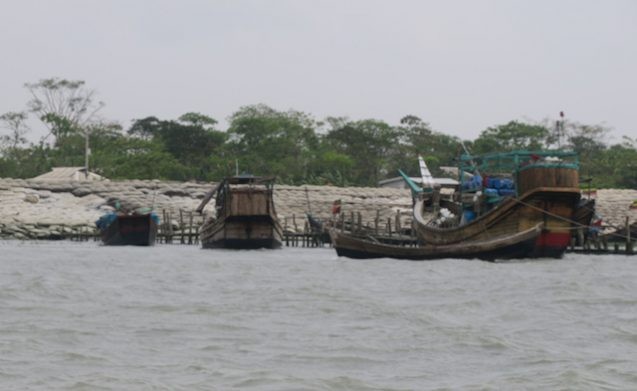Continuing the Survey: Watermelon and Winds
Continuing our electromagnetic survey of fresh and saline groundwater, we saw the landscape change from lush watermelon fields to fallow rice fields as the salinity increased towards the sea.
As we head south along the Tetulia Channel in southern Bangladesh on the M/V Kokilmoni, the landscape is changing. The northern part of this channel contained many chars (sandy river islands) that were excellent for deploying our magnetotelluric (MT) instruments. We are using them to image the groundwater in coastal Bangladesh. In many places the groundwater is saline, but beneath the saline water there is freshwater from the last ice age. Since the electrical conductivity of fresh and salty water is very different, we can use electromagnetic techniques to map them.
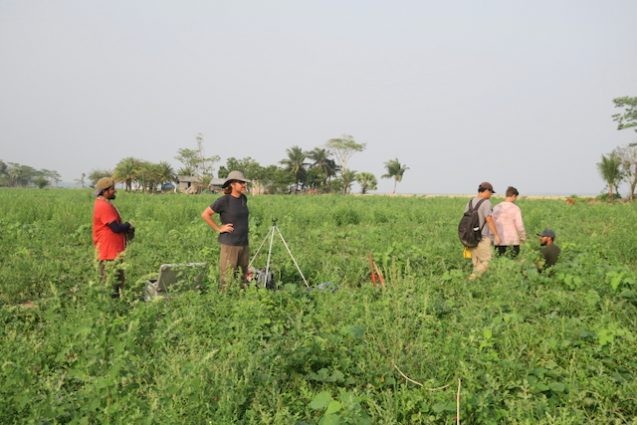
As we continued, the chars gave way to farm fields. We had been looking for fallow fields with cows grazing on the grass. Now we found very few of them that were dry enough for the equipment. However, we found that there were patches of fallow land for the cows surrounded by crops. We were able to put the central recorder and battery in the fallow field surrounded by the three magnetometers, which have to be buried. The electrical electrodes are placed 50 meters away in the four cardinal directions, but they are small and can be buried without disturbing the crops.
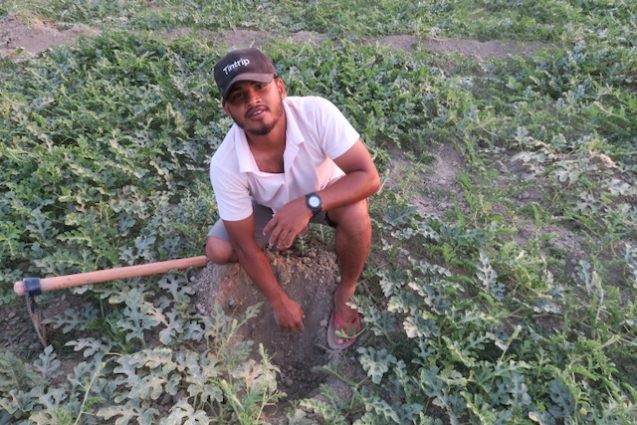
We were concerned about Cyclone Asani, a rare March cyclone, but it made landfall well to the south of us. Still, we stayed in small protected channels each night rather than the 5-kilometer-wide Tetulia Channel. One morning, the weather looked concerning, so the Kokilmoni stayed in place until the weather cleared around 11 am.
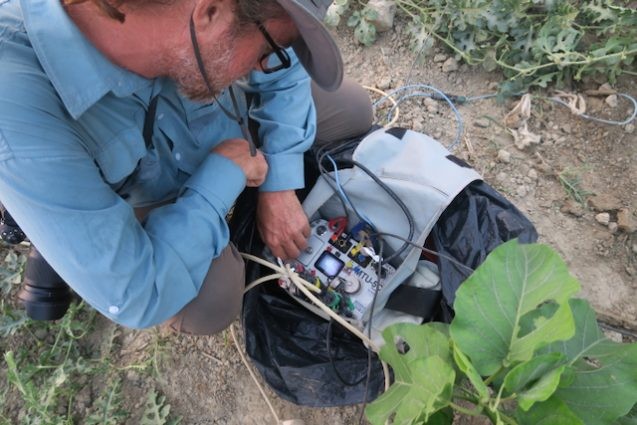
As we continued downstream, we stopped finding fallow patches. Everyone was growing watermelons in all the available land. Luckily for us, the farmers agreed to let us deploy in their watermelon fields. The fields are cut by irrigation channels and we could bury the three-foot-long magnetometers in those. There are also large enough gaps between plants to position the recorder and the electrodes. Furthermore, in the fields that were ripe, we got fresh watermelons as well. You can’t get fresher than eating just picked watermelon in the field it was grown in. The farmers are giving us watermelons several times a day.
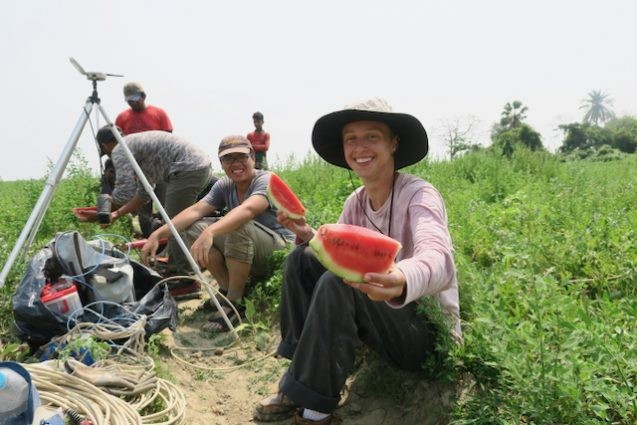
Thus, everything was going smoothly. We had deployed 18 stations in five days. Then the weather changed and it became very windy. The wide channel that we are traveling opens to the Bay of Bengal and the 20-knot winds were raising whitecaps. After picking up our stations in the morning, we headed into a more protected side of the channel.
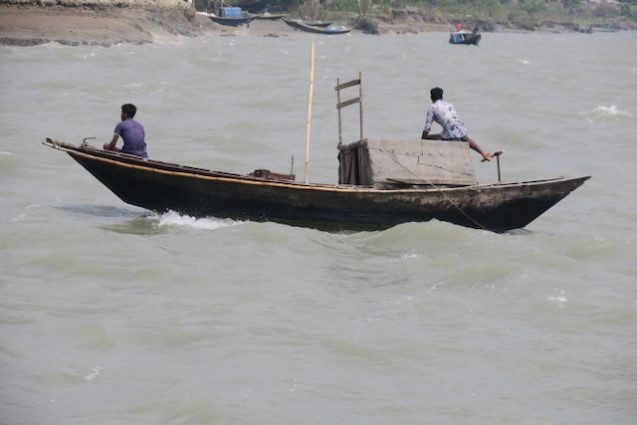
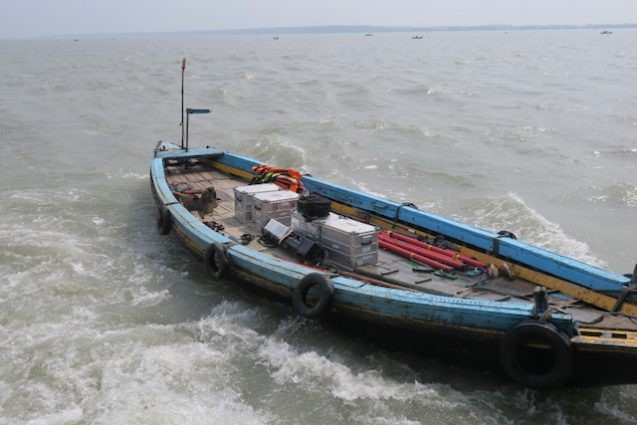
While waiting on the weather, I installed the campaign GPS at a geodetic monument I visited in 2020 just before COVID. These monuments were installed in 2002 by the Survey of Bangladesh. Remeasuring them in 2020 reveals how much they have subsided in the intervening 18 years. Since we are nearby, we headed over and installed it to get another measurement.
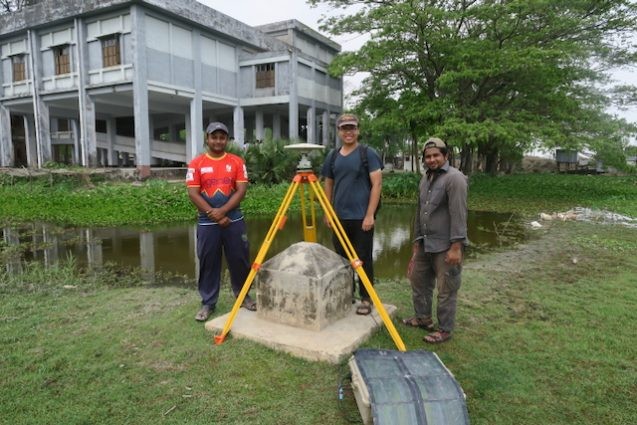
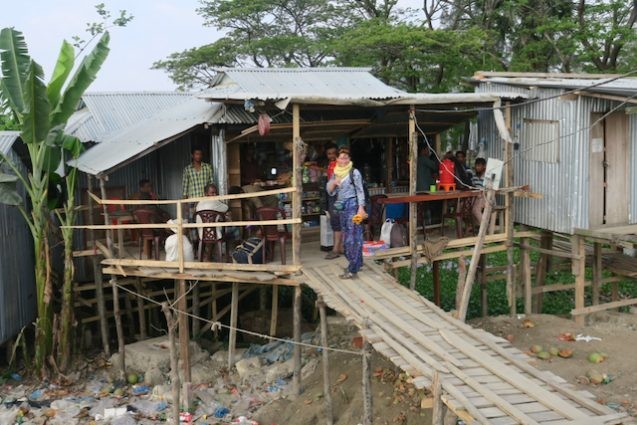
The wind looks like it might continue for several days, but we need MT stations here to see the transition to saltier water as we approach the Bay of Bengal. It was already lunchtime and we had not installed any new stations. In Bangladesh, you always have to be flexible and resilient. We had turned into the Andharmanik River to get out of the wind in the wide main channel. We decided to continue along its course and follow it out to the sea. It was much calmer in this narrower river in the middle of a large island. We managed to get two stations in before dusk.
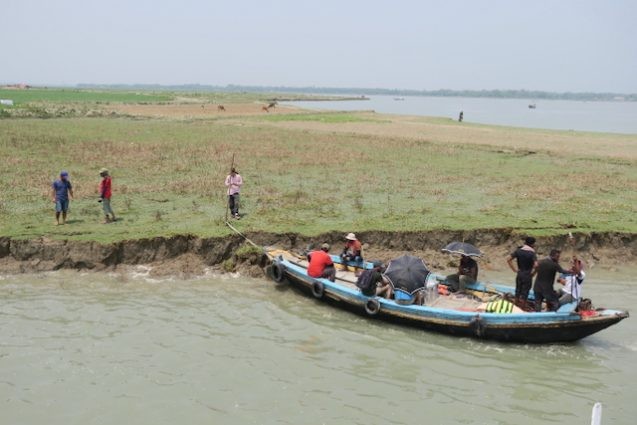
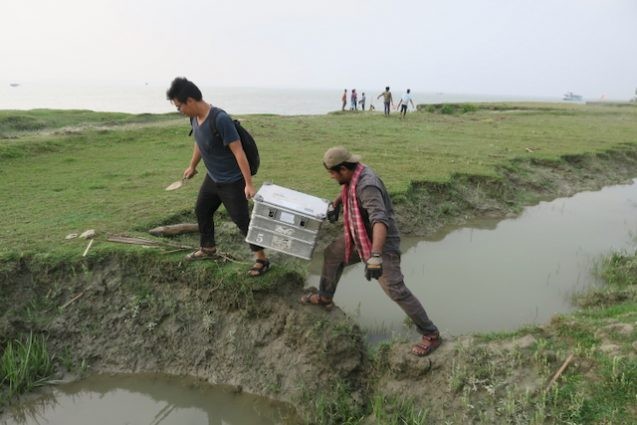
As we are getting closer to the Bay of Bengal, the water is becoming more saline. We can see salt deposits on the dry soil. The lush watermelon fields have given way to fallow rice paddies. Here they can only grow rice when the monsoon rains and overflowing rivers bring fresh water. During the winter and spring, the lands lie fallow. There is no lucrative watermelon crop here.
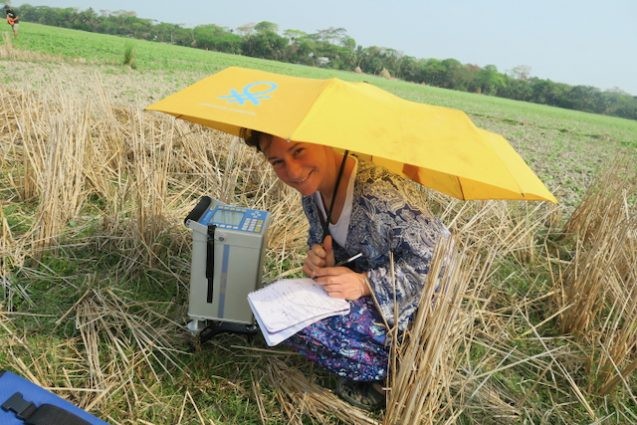
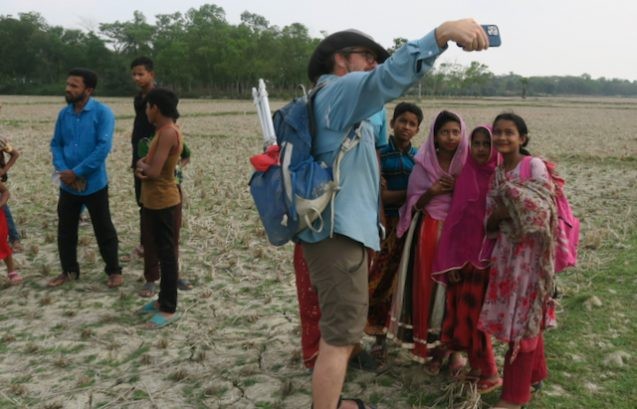
The next day, we continued along the Andharmanik River and put in the final three stations of this transect. For the last station, we took the country boat up a small channel filled with fishing boats. This channel is just a few kilometers behind Kuakata Beach. We had made it to the end of the line. We even sailed passed some mangrove forest near the coast, but decided the open fields were better than fighting our way through the forest again.
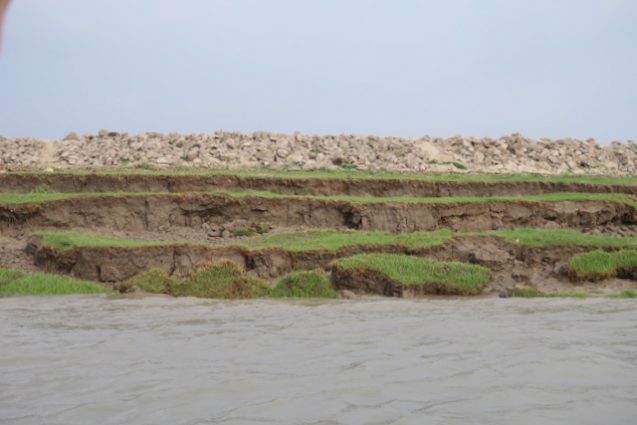
We have finished 23 MT stations along this transect for a total of 44 stations. At the end of the cruise there will be a few more done near Khulna, but I will have left the boat before then. We will now switch to a different type of electromagnetic measurement that will be towed behind the boat.
